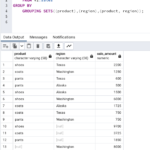In my last post, I summarized when MySQL replication is typically implemented. I now want to expand on that and talk about MySQL replication use cases.
Scaling out using MySQL Replication
Let’s take a typical example, the application is read-heavy versus writes. The server is under heavy read load and you want to reduce that. You have optimized indexes etc all you can but the database is still struggling to keep up with the demand. To alleviate the load, more read requests per second need to be processed.
You now have to make a decision, do you scale vertically with a larger server and hope the problem gets fixed this way or do you scale horizontally and add extra servers?
Scaling vertically with a bigger server may address the problem. More CPU’s, faster disks etc could well remove the bottleneck, however this involves a migration exercise from the old to the new server which can be a lengthy operation.
If the application is supporting a business which is experiencing growth and therefore increases in load, repeating the migrations each time (assuming that the hardware to support it has been invented that is faster than what you already have) is not a viable long term solution.
By scaling horizontally and implementing MySQL Replication, you can add additional servers and load balance read requests across them. Want more read throughput? You can add more replica’s.
I’ve used a read-heavy application as an example here. If you wanted more write throughput, then MySQL replication is not a solution to this problem and some form of sharding/HA cluster solution would be used.
Reducing Impact of Backups Taken By Mysqldump
If you use the out of the box tool for taking backups of your database – mysqldump, you may have noticed that it can cause locking problems as it takes the backup.
One get get around this by adding –single-transaction to the command but if you have a replica of your databases available on another server you may choose to take backups of mysql databases from the slave to take some of the load away from the master server.
After all, in a mysql master slave setup, there could be multiple slaves but only one master. So backing up a slave, rather than the master makes logical sense.
Facilitating Reporting Using MySQL Replication
The business wants information from its data. The data is in the production databases. Running queries against databases for reporting can be heavy and affect performance to the main application due to the need to join many tables and aggregate lots of rows.
So you could schedule your reports to run off peak via some cron or windows task. But wait, the business wants these reports sooner, it doesn’t want to have to wait for this information for many hours. The data analysts need them today!
This is another great reason to setup MySQL replication, the replica can be used for heavy reporting tasks, whether these are reports within the application, data analysts or ETL jobs, the fact that the replica is not used by the production application means these tasks have no impact. Everyone is happy 🙂
Providing Failover/High Availability
It’s worth noting that MySQL replication is not a complete high availability solution due to the master/slave configuration. If the master goes down for example, there is a bit of work needed to promote an existing slave to become the master. For more information on a complete HA solution for MySQL, check out MySQL Cluster
In my mind, when I think high availability, database services are not interrupted at any level. Instead, we could say that MySQL replication provides increased availability or higher availability because of the replica’s that exist which can be used in the event of failover.
For businesses which can suffer some brief interruptions whilst the master is promoted, MySQL replication increases database availability and fulfills a need. With more investment, availability increases. There is a link here which I am quoting from that summarizes this perfectly;
Each architecture used to achieve highly available database services is differentiated by the levels of uptime it offers. These architectures can be grouped into three main categories:
- Data Replication.
- Clustered & Virtualized Systems.
- Shared-Nothing, Geographically-Replicated Clusters.
In my next post, I am going to look more closely at the replication event types.


Leave a Reply